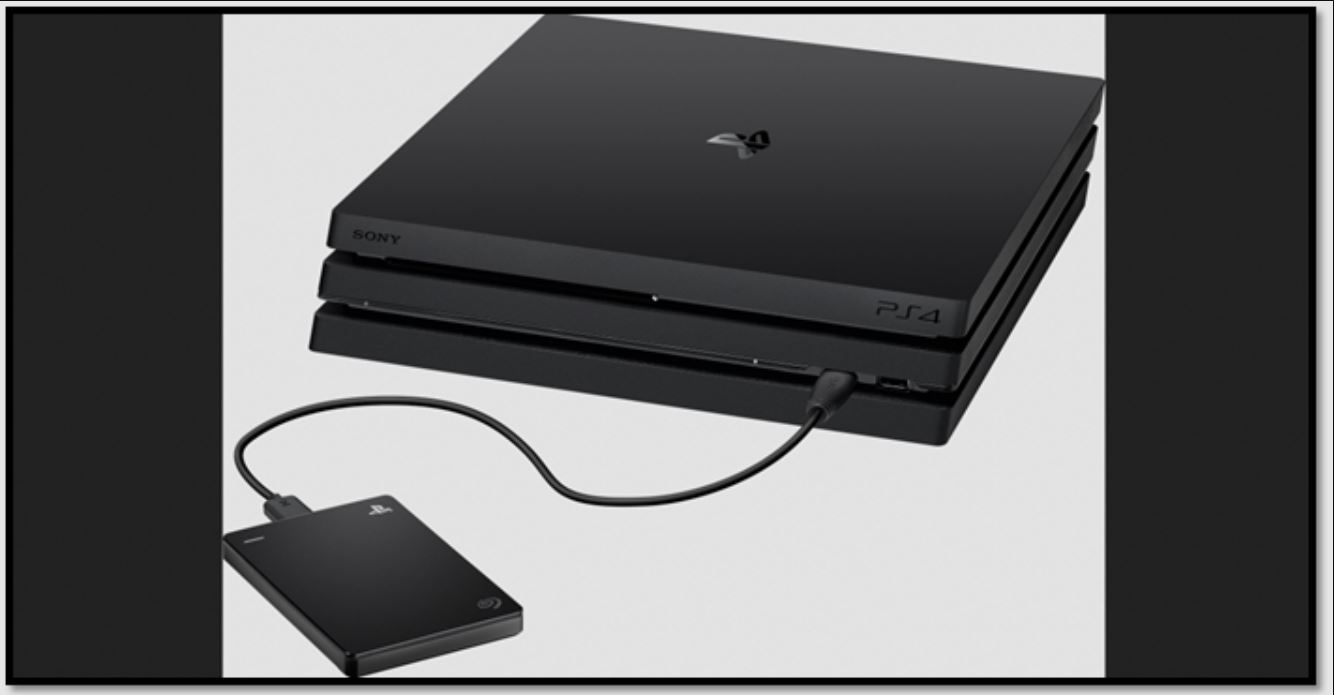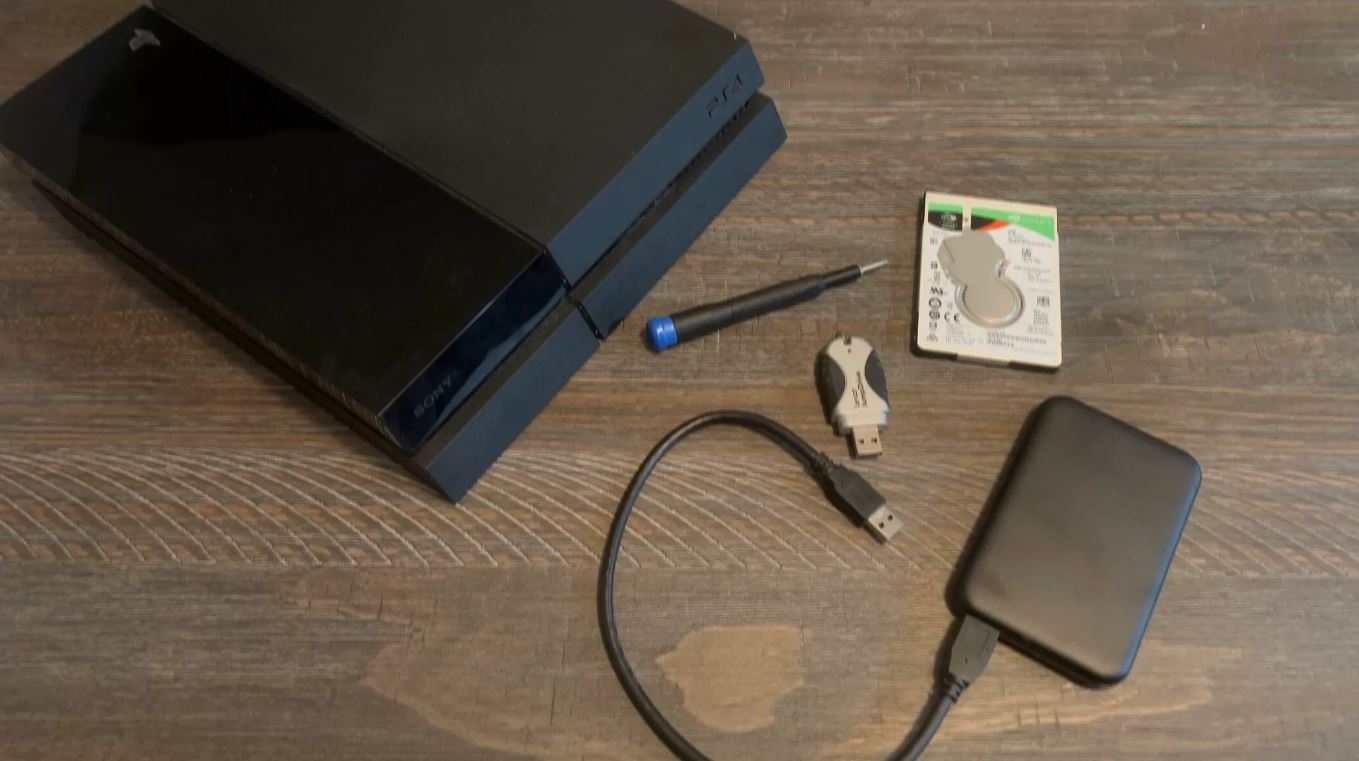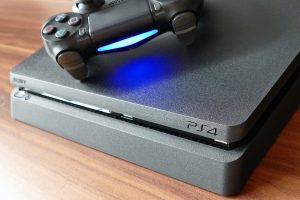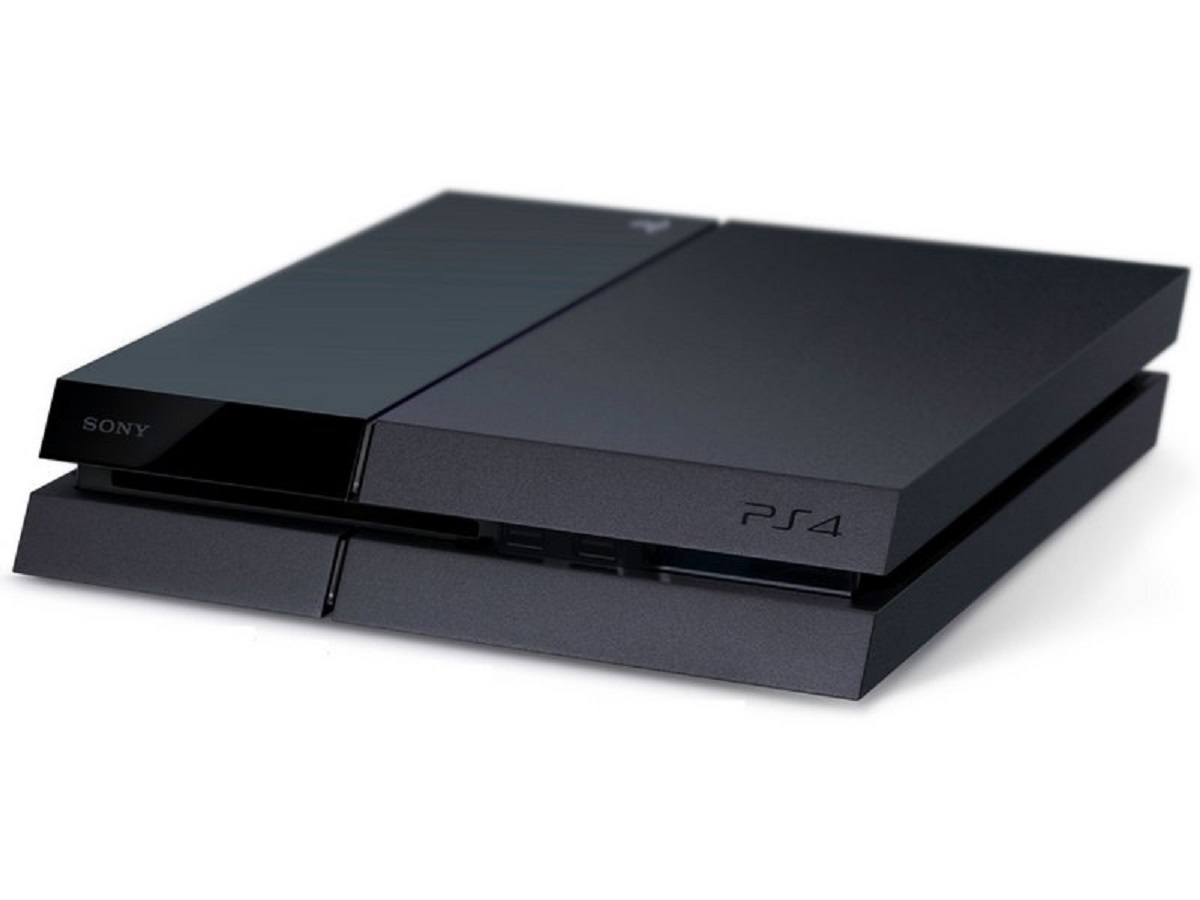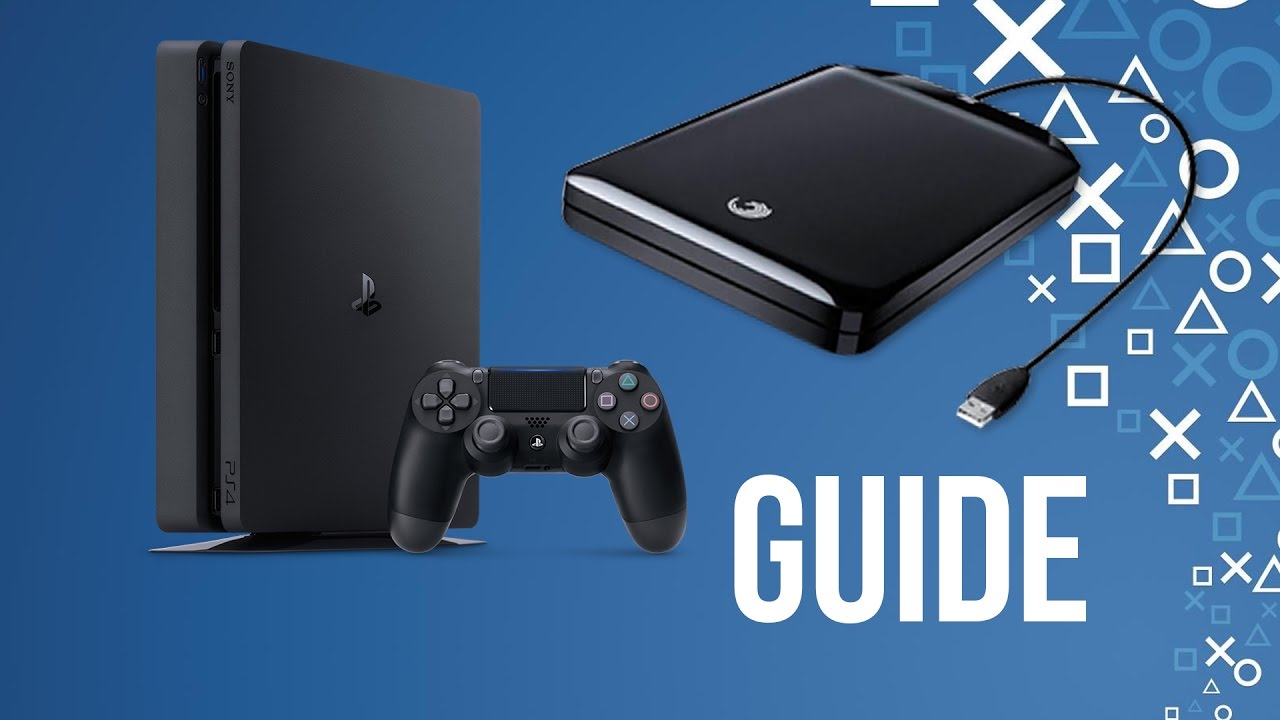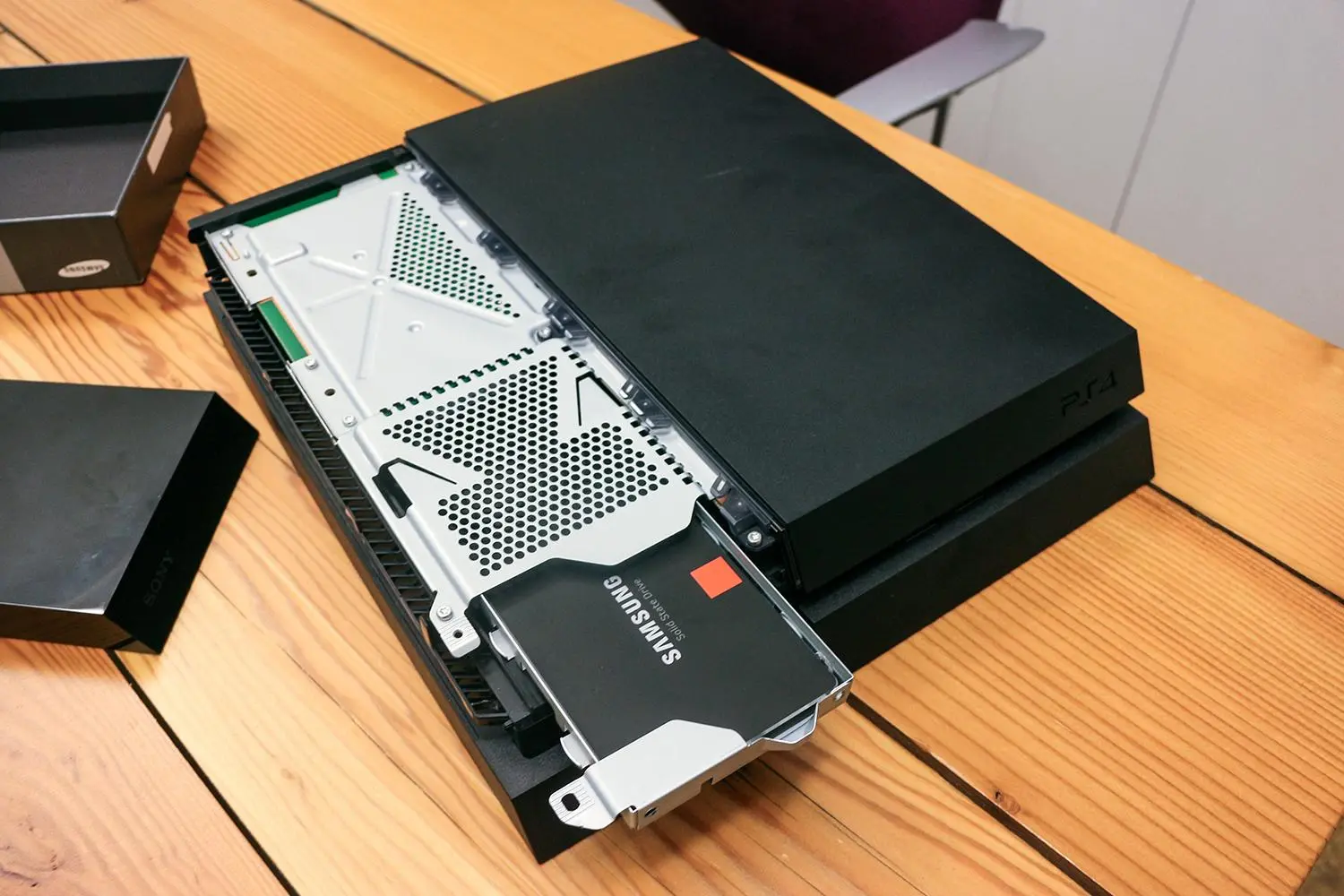Introduction
Welcome to this guide on how to fix issues with your PS4 external hard drive. The PS4 allows you to expand its storage capacity by connecting an external hard drive, providing you with more space to store your games, saves, and other media. However, like any technology, issues can sometimes arise that prevent your external hard drive from working as intended.
In this guide, we will walk you through various troubleshooting steps to help you identify and resolve common issues with your PS4 external hard drive. Whether you are experiencing errors, disconnections, or formatting problems, we’ve got you covered. By following the steps outlined in this guide, you will have a better understanding of how to resolve these issues and get your PS4 external hard drive working properly again.
Before we dive into the troubleshooting process, it’s essential to ensure the compatibility of your external hard drive with your PS4. Not all external hard drives are compatible, so it’s crucial to check the specifications and requirements to avoid any potential issues.
So, if you’re ready to tackle the problems with your PS4 external hard drive, let’s get started by first checking its compatibility.
Checking the Compatibility of Your External Hard Drive
Before troubleshooting any issues with your PS4 external hard drive, it’s important to confirm that the drive is compatible with your console. Not all external hard drives will work seamlessly with the PS4, so it’s crucial to check the compatibility requirements before proceeding.
Here’s how you can check the compatibility of your external hard drive:
1. Check the connection type: The PS4 supports USB 3.0 for external storage devices. Make sure your external hard drive has a USB 3.0 port to ensure optimal performance. USB 2.0 drives may work, but transfer speeds may be slower.
2. Verify the storage capacity: The PS4 supports external hard drives with a minimum capacity of 250GB and a maximum capacity of 8TB. Ensure that your drive falls within this range to avoid any compatibility issues.
3. Confirm the file system format: The PS4 requires the external hard drive to be formatted using the FAT32 or exFAT file system. Check the format of your drive and ensure it meets the requirements. If not, you may need to reformat the drive, which will result in the loss of all existing data. Make sure to back up your files before proceeding with the format.
4. Consider the power requirements: Some external hard drives, especially high-capacity ones, require an additional power source. Ensure that your drive is powered correctly, either through a USB cable or an external power adapter, depending on its specifications.
By verifying these compatibility factors, you can ensure that your external hard drive meets the necessary requirements to function with your PS4. If your drive satisfies all the compatibility criteria and you are still experiencing issues, it’s time to move on to the troubleshooting steps.
Troubleshooting Common Issues
When it comes to troubleshooting common issues with your PS4 external hard drive, there are several steps you can take to identify and resolve the problem. In this section, we will walk you through some of the most common issues and their respective solutions.
1. Check the physical connections: Start by ensuring that the USB cable connecting your external hard drive to the PS4 is securely plugged in. Disconnect and reconnect the cable to make sure it’s not loose or damaged.
2. Test with a different USB port and cable: Sometimes, a faulty USB port on the PS4 or a damaged cable can cause connection issues. Try connecting your external hard drive to a different USB port on the console and test it with another cable, if possible.
3. Update the PS4 system software: Outdated system software can lead to compatibility issues with external devices. Make sure your PS4 is running on the latest firmware version. Go to the Settings menu, select “System Software Update,” and follow the on-screen instructions to update your console.
4. Check for firmware updates for the external hard drive: Some external hard drives have firmware updates available that can improve compatibility and performance. Visit the manufacturer’s website and check if there are any firmware updates for your specific model.
5. Test the hard drive on a different device: To rule out any hardware issues, connect your external hard drive to a computer or another compatible device. If it works fine on other devices, the problem may be with your PS4. However, if it doesn’t work on any device, the issue may lie with the external hard drive itself.
6. Restart the PS4 and rebuild the database: Sometimes, a simple restart can resolve minor glitches. Turn off your PS4, unplug the power cord, wait for a few minutes, and then plug it back in. Once the console boots up, go to the Safe Mode menu and select “Rebuild Database.” This process can fix any corrupted data and improve the performance of your external hard drive.
7. Factory reset the PS4: If none of the above steps work, you might need to reset your PS4 to its factory settings. Keep in mind that this will erase all data on your console, including game saves and settings, so make sure to back up any important files beforehand.
By following these troubleshooting steps, you can effectively address common issues with your PS4 external hard drive. If the problem persists, don’t worry, as there are still more options to explore. Next, we will discuss how to reconnect and format your hard drive.
Reconnecting and Formatting the Hard Drive
If you’ve been experiencing issues with your PS4 external hard drive, reconnecting and formatting the drive can often help resolve the problem. Follow the steps below to reconnect and format your hard drive:
1. Disconnect the hard drive: Turn off your PS4 and unplug the external hard drive from the console.
2. Inspect the USB port: Take a look at the USB port on your PS4 to ensure that there are no visible signs of damage or debris. Clean the port gently if you notice any dirt or dust.
3. Reconnect the hard drive: Plug the external hard drive back into the USB port on your PS4. Make sure the connection is secure and tight.
4. Power on the PS4: Turn on your PS4 and wait for it to fully boot up.
5. Format the hard drive: Go to the PS4 Settings menu and select “Devices,” then “USB Storage Devices.” Choose your external hard drive from the list of devices and select “Format as Extended Storage.” Follow the on-screen prompts to complete the formatting process. Note that formatting will erase all data on the hard drive, so ensure you have a backup if necessary.
6. Set the external hard drive as the default storage location: After formatting, go to “Settings,” then “Storage,” and select “Extended Storage.” Choose “Applications” and “Install Location” to ensure that all future downloads are stored on the external hard drive by default.
By reconnecting and formatting your hard drive, you are essentially starting with a fresh connection and ensuring that it is properly set up for use with your PS4. This can often resolve compatibility and performance issues.
If you still encounter problems with the hard drive after reconnecting and formatting, it may be necessary to update your PS4 system software or seek further assistance from Sony support. We will explore these options in the next sections.
Updating the PS4 System Software
Updating the system software on your PS4 is another crucial step in troubleshooting issues with your external hard drive. Outdated software can sometimes cause compatibility problems and prevent your hard drive from functioning correctly. Follow the steps below to update your PS4 system software:
1. Connect your PS4 to the internet: Make sure your console is connected to the internet either via a wired or wireless connection.
2. Access the Settings menu: From the PS4 home screen, go to the Settings menu.
3. Select the “System Software Update” option: Scroll down and select “System Software Update” from the list of settings.
4. Check for updates: Choose the “Check for Update” option to search for the latest available software version.
5. Download and install the update: If there is a newer version available, follow the on-screen instructions to download and install the update. This process may take some time, so be patient and ensure that your PS4 is connected to a stable internet connection.
6. Restart your PS4: Once the update is installed, restart your PS4 to complete the process.
By keeping your PS4 system software up to date, you ensure that your console has the latest bug fixes, improvements, and compatibility updates. This can significantly help in resolving issues with your external hard drive.
If updating the system software does not fix the problem, or if your PS4 is already running the latest version, it’s time to explore options for backing up and restoring data on your external hard drive. We will discuss this in the next section.
Backing Up and Restoring Data on the External Hard Drive
Backing up and restoring data on your external hard drive is a crucial step to prevent data loss and ensure the smooth functioning of your PS4. By following the steps below, you can safeguard your game saves, settings, and other important files:
1. Backing up data:
– Connect your external hard drive to your PS4.
– From the PS4 home screen, go to “Settings” and select “System.”
– Choose “Backup and Restore” and then “Back Up PS4.”
– Follow the on-screen prompts to select the files you want to back up and initiate the backup process.
2. Restoring data:
– Connect your external hard drive to your PS4.
– From the PS4 home screen, go to “Settings” and select “System.”
– Choose “Backup and Restore” and then “Restore PS4.”
– Follow the on-screen prompts to select the backup file you want to restore and initiate the restoration process.
It’s crucial to regularly back up your data to ensure that you can easily recover it in case of any issues with your external hard drive or PS4. By doing so, you can minimize the risk of losing your progress, game saves, and important files.
If you have followed all the troubleshooting steps mentioned earlier and are still encountering problems with your external hard drive, it may be time to seek assistance from Sony support. Let’s explore this option in the next section.
Contacting Sony Support for Further Assistance
If you have tried all the troubleshooting steps mentioned in this guide and are still experiencing issues with your PS4 external hard drive, it may be necessary to contact Sony support for further assistance. The technical support team at Sony is equipped to provide guidance and help resolve more complex issues. Here’s how you can reach out to them:
1. Visit the PlayStation support website: Go to the official PlayStation support website at www.playstation.com/support and navigate to the appropriate section for your region.
2. Search for your specific issue: Use the search function on the support website to look for articles and FAQs related to your problem. Sony often provides troubleshooting guides and step-by-step instructions that may help resolve your issue.
3. Contact Sony support: If you are unable to find a solution on the support website, you can reach out to Sony directly. Look for the “Contact” or “Support” section on the website, which usually provides different options to contact Sony, such as phone, email, or live chat support.
4. Provide detailed information: When contacting Sony support, provide as much information as possible about your issue. Describe the problem you are experiencing, any error codes or messages you have encountered, and the troubleshooting steps you have already taken. This will help the support team diagnose and address the issue more effectively.
Remember to stay patient and polite when dealing with Sony support. They are there to assist you and will do their best to help resolve your problem.
In some cases, Sony may determine that your external hard drive needs to be repaired or replaced. If your console is still under warranty, they can guide you through the warranty process and provide the necessary assistance.
By reaching out to Sony support, you can receive expert help tailored to your specific situation and ensure that all possibilities for resolving your external hard drive issues are explored.
Conclusion
Fixing issues with your PS4 external hard drive can be a frustrating experience, but with the troubleshooting steps and guidance provided in this guide, you are equipped to tackle the most common problems that may arise.
We started by checking the compatibility of your external hard drive, ensuring that it meets the necessary requirements for use with your PS4. Then, we explored troubleshooting common issues, such as checking physical connections, updating system software, and testing the hard drive on different devices.
If the issues persisted, we learned how to reconnect and format the hard drive, providing a fresh start that often resolves compatibility and performance problems. We also discussed the importance of backing up and restoring data on the external hard drive to prevent data loss and ensure a smooth gaming experience.
If all else fails, we explored the option of contacting Sony support for further assistance. Their knowledgeable support team can provide guidance tailored to your specific situation and help resolve more complex issues.
Remember, patience and persistence are key when troubleshooting issues with your PS4 external hard drive. With the troubleshooting steps and guidance in this guide, you can effectively resolve many common problems and get your external hard drive working optimally again.
We hope this guide has been helpful in assisting you with fixing issues with your PS4 external hard drive. Now it’s time for you to put these solutions into action and get back to enjoying your gaming experience uninterrupted!









